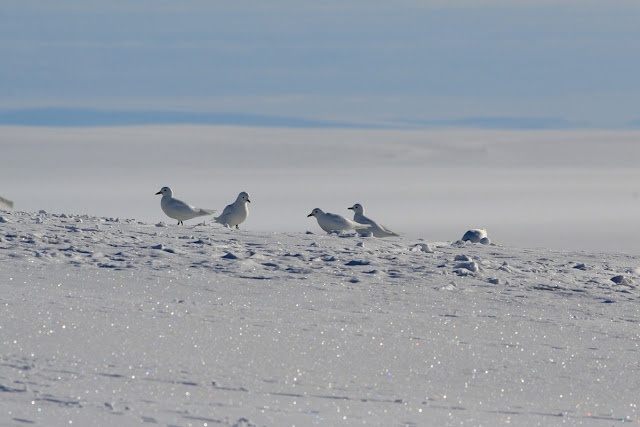8/3
Left Neot Hakikar at 0530 to eat breakfast at little lake just south of the Dead Sea. The lake is situated one kilometre north of the Harava Junction on the eastern side of the road. Reedbeds surround the lake and these need to be scanned thoroughly in order to find Clamorous Reed Warbler and Dead Sea Sparrow. We found a big flock of Dead Sea Sparrows roosting in the south-western part of the reed beds. The birds flew out of the night roost at 0615-0630. Clamorous Reed Warbler sang during the entirety of our visit but we had to work hard to see one. The lake should also be a good place to spot spotted/little crake though we did not see any during our visit. A Ferruginous Duck was a nice find though.
Some big cliffs extending for kilometres along the south-western shores of the Dead Sea holds a large breeding colony of Pallid Swifts and we saw 1000’s of birds as we passed going north during the morning.
A small lake near Nehe Sowar (there is a gas station) should be a good place for Dead Sea Sparrow but we did not have time to check this.
En route to Wadi Mishmar we passed several small wadies and added Tristams Starling, Blackstart, Rock Swallow, Nubian Ibex and Dorcas Gazelle but do not use time here even though it might be hard. These species were all common later on.
Wadi Mishmar is probably the best and most unspoiled of the wadi’s south of Ein Gedi. Be sure to go the end of the dirt road to park the car next to a small fenced area. Fan-tailed Raven, Arabian Babbler, White-Crowned Black Wheatear, Cypress Warbler, Eastern Orphean Warbler, Bonelli’s Eagle, Scrub Wabler, Blue Rock Thrush and Rock Hyrax. Half of our group also saw Mountain Bunting. The Wadi should also be good for Sinai Rosefinch.
Ate lunch at the visitor centre at Ein Gedi which did not produce anything new. Did some shopping in the Kibbutz and headed southward. Near Masada we found two Pale Rock Sparrows.
In Shizaf Reserve we met up with Oded Kenyan. Shizaf Reserve has several breeding pairs of Arabian Warbler. On our way to the warblers Oded showed us a Spiny-tailed Lizard which was truly amazing. Unfortunately we could not locate any warbler maybe do to the fact that we arrived late in the afternoon. Remembering Odeds youtube-videos that he had send us while we were still in Denmark we quickly decided to give it a go again the next morning.
In the evening Oded gave us spotlighting trip around the Shizaf area. It was quite productive with Arabian Wolf (probably of the small desert subspecies), Cape Hare and Lesser Egyptian Jerboa 2 being the highlights. Spent the night at Harezeva
 |
| Fan-tailed Raven, Wadi Mishmar |
 |
| Cypress Warbler, Wadi Mishmar |
 |
| Blackstart, Wadi Mishmar |
 |
| Tarucus rosaceus, Wadi Mishmar |
 |
| Golden Spiny Mouse, Wadi Mishmar |
 |
| Sand Partridge, Wadi Mishmar |
 |
| Southern Grey Shrike, Shizaf Reserve |
 |
| Near Masada we found two Pale Rock Sparrows. |
 |
| Nubian Ibex |
 |
| Rock Hyrax, Wadi Mishmar |
 |
| Tristams Starling, Ein Gedi |
 |
Yellow-vented Bulbul, Ein Gedi |
 |
| Just south of the Dead Sea |
 |
| Arabian Wolf (probably of the small desert subspecies) |
 |
| Dead Sea |
 |
| Pallid Swift, Dead Sea |
 |
Together we will find everything!
Text RDN and photos SSL |




























































